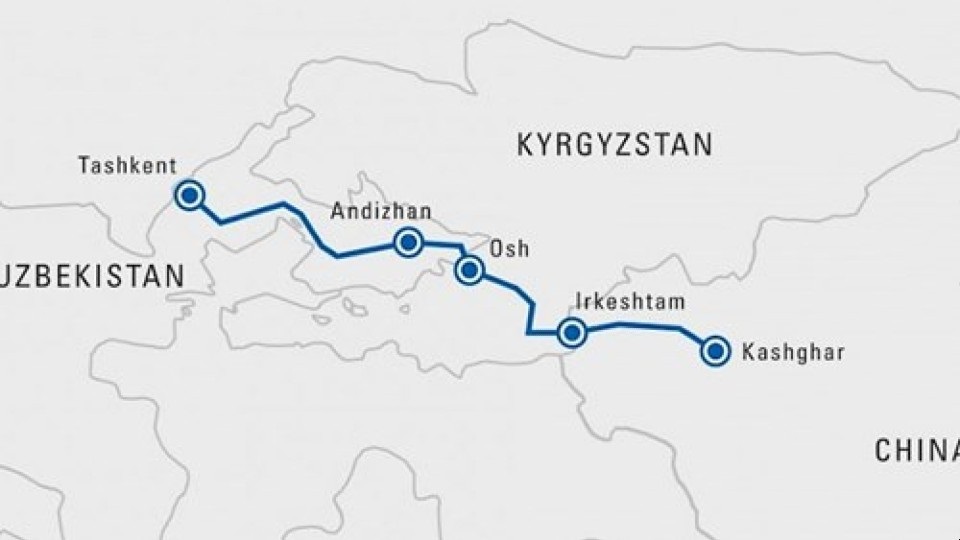New multimodal service China-Kyrgyzstan-Uzbekistan

A new multimodal service has been launched on the route China-Kyrgyzstan-Uzbekistan. On Friday 5 June the first train departed from Lanzhou, in northwest China. Rail and lorry are combined to shorten the transit time along the route, which is currently not yet operated as a rail freight only service.
On the Chinese section, which runs from Dongchuan, Lanzhou to Kashgar, Xinjiang Uygur autonomous region, the goods are transported by rail. From Kashgar to Osh in Kyrgyzstan, the shipment moves by road. The train takes over again from Osh, where they take off to the final destination in Tashkent city, Uzbekistan.
The entire journey is expected to take 7-10 days, saving about 5 days compared to other transport methods. The route has been carried out so far by truck. Lorries cross the 920-kilometre distance on the Kashgar – Tashkent route passing through Irkeshtam and Osh in Kyrgyzstan, as well as Andijan (Andizhan) in Uzbekistan. This route has been a regular line since February 2018.
No railway route
There are several reasons that the route is not yet operated by freight trains only. Although the service has been examined and discussed by many, there still isn’t any exact price of the project. The amount varies depending on the possible route due to the difficult and mountainous landscape of southern Kyrgyzstan.
Another unclarity involves the gauge. While both Kyrgyzstan and Uzbekistan have tracks of a 1,520 millimetre gauge, the Chinese government has proposed to build a railway line with a gauge of 1,435 millimetres through Kyrgyzstan. The Kyrgyz government is afraid that the new route will bring no benefits to the country and will only use a part of its territory. Therefore, it offered China to construct several other lines with a gauge of 1,520 millimetres across the country. China refused to do this.
Benefits
Nevertheless, the interests in a railway route China-Kyrgyzstan-Uzbekistan is high in all participating countries. First, a Xinjiang – Kyrgyzstan – Uzbekistan railway route will shorten the route from China to Uzbekistan even further. The railway link between China and Uzbekistan links to Iran (via Turkmenistan) and Turkey, as well as eventually to Europe, especially to Southeast Europe. With this, the route from China to Southeast Europe could be reduced up to 900 kilometres, equal to up to seven or eight days.
Secondly, it will stimulate the economic development of the Xinjiang Uygur Autonomous Region. The majority of container trains from central, eastern and southern China to Europe run via Xinjiang. Kashgar, one of the westernmost cities in China, could be a junction in Xinjiang. The Chinese government is discussing the construction of two railway lines from Kashgar: one westward to Kyrgyzstan and Uzbekistan, and another southward.

Also read:
From China to Iran via Kyrgyzstan: is the faster rail link real?
You just read one of our premium articles free of charge
Want full access? Take advantage of our exclusive offer





